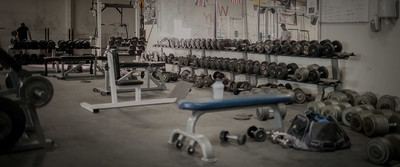Nearly half of all runners are injured in any given year, and 82 percent will experience a running-related injury in their lifetime. The lesson is clearly never to run at all—right?

If only it were that simple. People will run. Your friends and neighbors do it, and despite your best intentions, you may find yourself bitten by the bug somewhere down the road. And despite the stats, the act of running has never been proven to be dangerous.
Clearly, though, a large-scale change is necessary. Shoe companies currently offer a closet of "natural" and "minimalist" footwear that offers one change of perspective. Jay Dicharry offers up another: Treat running like a skill. Work up to it, develop it, and focus on quality rather than quantity, no matter what shoes you wear. In short, respect it like a powerlifter respects a loaded barbell. The same delicate human body is at stake in either activity.
Dicharry, a physical therapist and strength and conditioning specialist at the University of Virginia, is no apologist for the sport of running as currently practiced. He calls it "a crazy type of badge-of-courage sport in which you have to pound yourself into shape day-in and day-out until you emerge on top." He is the director of the University of Virginia's SPEED clinic and Motion Analysis Lab, a facility that uses state-of-the-art treadmills and imaging technology to analyze runners' form and offer technique training.
This August, Dicharry released his first book, Anatomy for Runners, which packs a biomechanic textbook's worth of analysis into a slim, heavily illustrated volume priced lower than many bestsellers.
Dicharry spoke with Bodybuilding.com about the importance of weight training, the risks of bad posture, and the ways that bad running form can indicate larger physical limitations. He also offered up a four-part plan to prepare runners for the stresses of the road or trail.
Q. Look around online—or in the gym—and it's pretty easy to notice a long-simmering antagonism between many runners and weightlifters. Runners tend to avoid the weight room like it's on fire, and weightlifters view running as some type of catabolic disaster. Are these people wrong to be so suspicious of one another's activities?
Oh, for sure. People are entitled to their opinions, but the old school idea that the two are mutually exclusive is dead wrong. There are well-documented studies showing that weightlifting is tremendously beneficial for running in many ways that decrease injury risk and improve performance.
So I tell runners, "Get in the weight room." It is obviously more important at different times of the year and depending on how old you are, but it is hugely important for runners to lift.
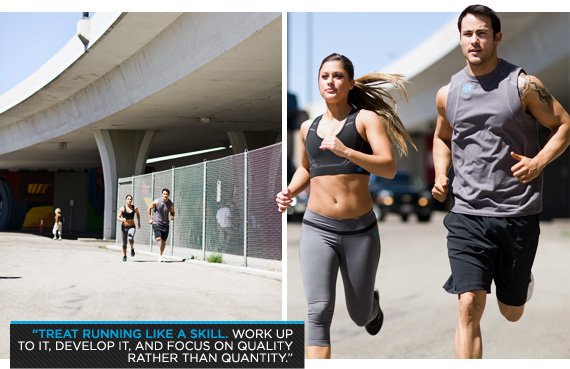
What about from the other side? What can good-form running offer someone who is a more serious weightlifter?
Well, that is a little different. Let's be clear here, if your goal is to gain as much muscle mass as possible, you are not looking to have a bunch of cardio during the week. So you need to take a look at your goals.
If you are looking for well-rounded health and fitness, then yeah, cardio training is incredibly effective. Put in the right amount at the right time. The time changes each season and even each day. You don't want to do a big cardio workout right after you lift, but I think doing something before or on a day off isn't going to hurt anything.
A major theme in your book is addressing anatomical imbalances through proper training before these imbalances become symptomatic—i.e. injuries. How soon should a runner get in the weight room?
Pretty quickly. I know that if Average Joe walks off the street and walks in a weight room and sees some guy at a squat rack putting up 400 pounds—well, that is sort of intimidating. They realize they are not going to walk in there and do that tomorrow. It's not going to happen.
But let's reverse the screw here and say that Average Joe walks into a running shop and sees some guy running a 10k. For some reason running just seems more accessible, easier to get into—and by nature it is. It is interesting to me that runners will just buy a pair of shoes and start running.

They think, "Oh, I just run." But if you see someone squatting 400 pounds, there is this preconception that this person has put in a lot of work to get where they are. They started low and worked their way up. That same notion gets lost in running.
The message I try to get across in the book is that just running is not going to help you reach your potential. Try to figure out what else is a limiting factor. A lot of this comes down to the fact that most people who take up running haven't done a lot of athletic pursuits in their past, so they lack a lot of the specific muscular control of folks do who do lots of different things. The more different things you do, the more of an athlete you inherently are. So the question here is: How can what you do complement your running?
That is the big take-home message here: If you spend time in the weight room, make it count. Let's make the things that we do specific. Being able to squat 400 pounds does not help you as a runner, but being able to maintain form with a little bit less weight, well, that actually does have a lot of carryover.
One of my favorite descriptions in the book that you use of contemporary running is that it is "a crazy type of badge-of-courage sport in which you have to pound yourself into shape day in and day out until you emerge on top." Do you feel like that is getting better at all?
No, I don't. People still just want to put in more, more, more. Like anything, people always say, "What is the elite person doing? They must be doing the best." But all of the elite training programs are the same. There isn't much variation.
But for some reason, the average runner has this idea that they have to get their miles per week up at all costs. That is not the be-all end-all. There are a lot of other things you can do.
By the end of the book I felt like I kind of had an assignment: Build a strong core, and build a strong butt. If all I did was focus on those two things, how much would that help me in athletics and life?
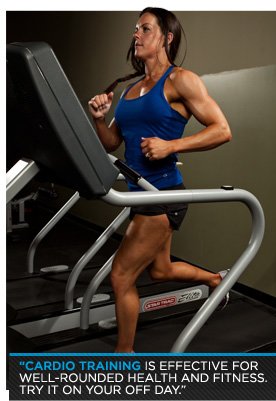
Tremendously, and here is the reason why: As you run faster, the amount of time you are in contact with the ground actually decreases. But the flip side of that is that when you have less time in contact with the ground, it is actually harder to run. So your body has to be able to supply more force to the ground quickly.
Here is why strength training helps runners: You have to be able to put out more force in a shorter amount of time to run faster. But if all you do is run, you never develop the true high-end strength and high-power demands that you need to do that. So yes, if you develop a strong core, you keep things stable. And if you have good glutes, you can propel yourself off the ground.
Walking is different than running. When you walk, most of the power from push-off actually comes from your calf.
When you run that isn't true. When you run, most of the power from push-off comes from your hips, so we're talking about true hip extension. If you improve your core strength and improve your hip extension strength, you are well on your way to becoming a more efficient runner.
You were also pretty clear that building a strong core for running and other athletics isn't about doing crunches.
The definition of core stability is how well you can stabilize your upper body on your lower body. That definition can factor in if you are doing some type of Russian twists. It is looking at how much rotation you've got while you are able to keep your trunk stable on the other planes.
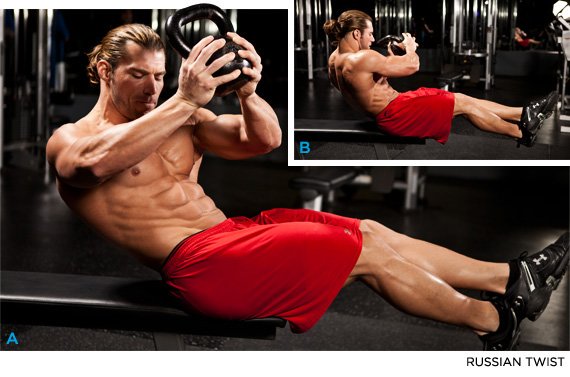
So for running, obviously you are looking at how your upper body moves reciprocally to your lower body. It operates differently, and it is supposed to. It is supposed to counterbalance your lower body. But what we are looking at is: How stable do you keep that link between your upper and lower body?
That is really, really important. When you allow your low back to pitch forward or arch, you inhibit those core muscles working, and when your core muscles can't work, your hips basically shut off too.
The way you describe it, it sounds like a postural problem in addition to a strength problem. How much do postural issues set people back when they start out an athletic pursuit?
Enormously. There is a classic physical therapist named Vladimir Janda who defined this thing called "lower quarter crossed syndrome." In the book, I eluded to it as "adolescent texting syndrome." It is basically the same thing. What it says is when you adopt a position where you stand in poor posture, you actually inhibit your ability to activate your hips, your muscles inside of your shin, and also your feet. That is not just a running issue; that is an everything issue.
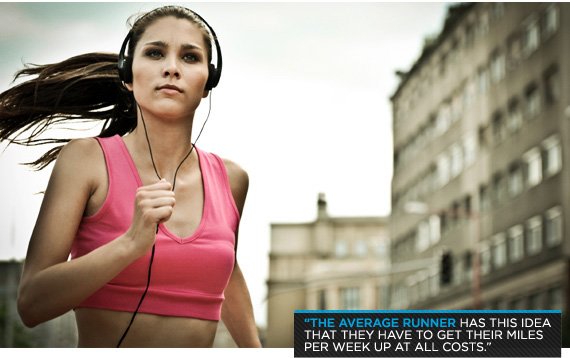
So it is basically saying, look, if you are going to spend all this time in the weight room training specific muscles but stand this way, you are only going to be able to fire about 50-60 percent of your muscle fibers instead of 100 percent. That is already starting off at a "D." That is not good.
Posture is absolutely huge, and posture is not just something we practice when running or in the weight room. This is something that people need to pay attention to just walking into their kitchen or at work and sitting all day long. You hear about people sitting on balls instead of on chairs; it's a great idea. The more different ways to keep your posture in check, the better things carry over.
While reading Anatomy for Runners, I got out an old dowel and I started squatting and doing the "Chair of Death" in the living room. How important are non-weight-bearing exercises like that in muscular and athletic development?
They are really important. It is not so much about the strength aspects, but rather the muscle memory. Talking about the Chair of Death specifically, I have a little movement screen I use, and almost every runner who fails the Chair of Death overstrides. It's interesting to me that the people who fail that exercise are the ones who try to contact the ground too far in front of them.
And interestingly enough, you tell that person, "OK, try to strike closer to you, and try to push off more behind you?"—they simply can't. They just don't get it. That's not a running problem. That's a problem with them.
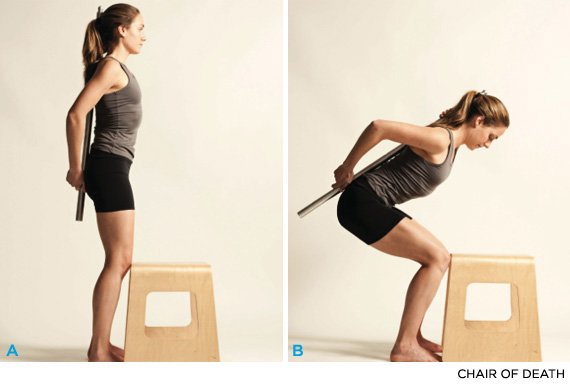
The Chair of Death isn't just an exercise; it's a way of looking at how you move and helping folks figure out, "Here is what I have to do." Practicing an exercise like that builds that skill set so that when you go run, you know what to tap into. You're not trying to search and think, "Wait a second, this is too many things to think about at once."
Some really painful shin splints from overstriding could help to bring that lesson home.
Yeah, exactly. One of the points I try to make in the book is that running form is tremendously important. But equally important are those ingredients that you as a runner bring to the table.
Jay Dicharry's Strength Training Workout For Runners
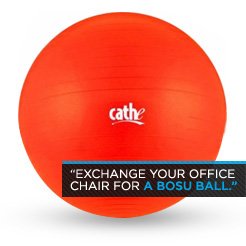
Runners need four critical things: postural alignment, specific stabilization, high strength, and the ability to produce this strength quickly.
Life is busy, and you want to make the most of your time. What's the most specific way to improve your running? Try these out below.
How often? Well, balance and proprioception are best done frequently, in small doses throughout the day. Typically people have tremendous improvements in control and coordination somewhere between a few minutes to two weeks.
For everything else, follow the old adage: once per week to maintain, twice per week to get improvement, three times per week for a bonus dose—especially in the offseason, when you should be taking some time to work on your limitations, and running is not really the priority. Caring for "the temple" is!
Postural Exercise
1. Vertical Compression Test
The goal here is to find a neutral spine when standing, walking, running, and all sitting and standing lifting postures. It's more of a skill than an exercise, but it's the foundation for everything else.
Have a partner stand behind you with their hands on your shoulders. Have them press down firmly on your shoulders. If the pressure causes your spine to buckle or move into a more arched position, or to move from an even weight distribution throughout your foot, then your posture needs work.
To work toward correcting this, use proper posture all day, every day, and practice single-leg balance whenever possible.
2. Push-up
3 sets, 10-20 reps
Do these on an unstable surface, because that instability forces body awareness. These can be done in a plank position with your feet on the floor and hands either on a Swiss ball or on a sling like the TRX or JungleGym XT.
The key here is to ensure that the thumb is pointing forward, as this encourages you to externally rotate the shoulders and retract the shoulder blades.
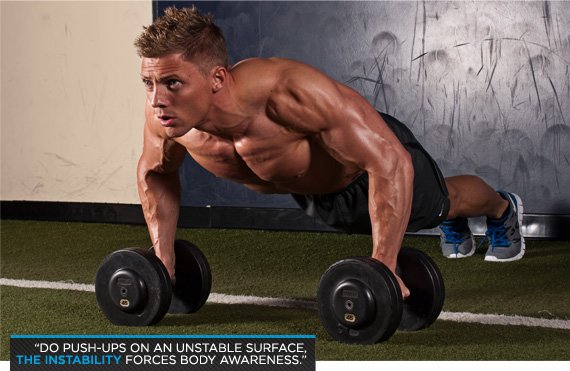
3. Swiss Ball Russian Twist
3 sets, 10-14 reps
Purpose is to improve upper body on lower body stabilization while putting emphasis on a neutral spine. Place your hands on a bench and the ball under your feet in a plank position.
Lift one foot off the ball. Rotate it under and across your body and back, looking out for any tightness or arch in lower back. Each leg swing counts as 1 rep.
4. Pull-up
Build up to 3-sets, 10 reps
While most folks view pull-ups as strength building—and they are—your lats and lower traps are large muscles that also assist you in keeping your shoulder blades back for better posture. The lats also influence stabilization of the spine and pelvis. No kipping allowed here!
Do these from a dead hang with a wide grip. If you need to use an elastic strap or weight assist machine, no problem. Just don't cheat and swing. Keep shoulder blades retracted throughout the movement. When you can do sets of 10, add weight to your torso via a vest or strap.
Stabilization
These exercises are meant to improve neuromuscular coordination, but they also help develop tri-planar hip stabilization, which is critical for runners. Aim for 2-3 sets of 10-20 reps of each.
1. Clamshells

100 daily
Research has shown that there are fewer differences between male and female runners that most of us have been told. This being said, the one thing that has stood out is that women typically have weaker hip abduction strength. Clamshells are a great way to isolate the lateral glutes.
Begin by lying on your side with your torso and pelvis both perpendicular to the ground. Next, straighten the spine. Squeeze your glutes tight like you have a quarter stuck between your butt cheeks.
With your feet resting on each other, lift only the knee up until it is level with the hip. Lower the knee down, keeping the glute contracted the entire time.
2. Rotisserie Chicken
3 sets, 10 reps
Use a sling or place a Swiss ball in a corner for additional stability. Lie with one leg on the ball, and one slightly off the ball. Place your hands on your hips and bridge up so the body is straight. As if you are a chicken on a spit, rotate the opposite side up, back to center, and down.
The key here is rotating from the hip, making sure to have absolutely no arch or tightness in the back. If any tightness is felt in the low back, drop the pelvis lower and try to rotate again.
3. Side-Lying Hip Bridge
3 sets, 10 reps
Use a chair, bench, or Swiss ball. Push your bottom foot into the ball so that the entire body rises off the floor while keeping the spine stable.
4. Side-lying Hip Adduction
3 sets, 10 reps
While lying on your side with the top leg up on a Swiss ball, chair, or bench, pull the foot in towards midline so that the entire side of the body rises up off the floor. Make sure the spine stays straight and stable.
Strength
The goal is to build strength, so we are looking for 3-4 sets of 5-8 reps.
1. Romanian Deadlift
3-4 sets of 5-8 reps
Use a bar, dowel, or broomstick to ensure that you maintain a neutral spine throughout the motion. Keep it in contact with your head, back, and tailbone throughout the movement.
After you've practiced the movement correctly until it feels natural, and you can tell when you are cheating, then you are finally ready to add weight. In time, you can work toward single-leg deadlifts.
2. Swiss Ball Triad
3-4 sets of 5-8 reps
These three movements teach you to maintain a neutral spine while working into hip extension.
- Phase 1: Lie on your back with your legs up on the ball. While keeping your core muscles tight, squeeze an imaginary quarter between your butt cheeks and raise your hips off the floor. Lower down while keeping the butt tight throughout the range. Control your motion; don't just flop up and down using momentum.
- Phase 2: Extend your legs straight out with the ball underneath your feet. Keep the butt tight, bridge up and down.
- Phase 3: Just like Phase 2, except that when you are up, curl the bar toward your butt while keeping the hips high.
3. Bulgarian Split Squat
3-4 sets of 5-8 reps
Put back foot on bench or in TRX. Keep your front leg 100 percent vertical. Add kettlebells or a barbell for additional weight.
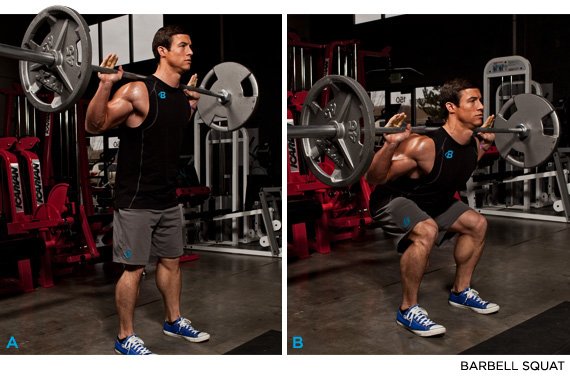
4. Back Squat
3-4 sets of 5-8 reps
Ensure correct form; initiate movement by moving hips back and hinging from the hips, not moving knees forward. If help with form is needed, practice by doing air squats holding a dowel on your back, keeping in contact with your tailbone, your back, and the middle of your head. Keep your knees pressed against the front of a chair to keep them from wandering forward.
Power
The key here is building explosive strength, so do these quickly!
1. Ninja Squat Jumps
3 sets, 10 reps max, 1-2 days per week
Your goal here is to land as softly as possible. At first, jump onto a box and step down. Then, progress to jumping up and down. The height of the box should start at mid-shin and build up to mid-to-upper thigh.
2. Box Drop Jumps
3 sets, 5 reps (Advanced Only)
Start on box, jump down landing softly, and then up as quickly as possible
3. 4-Square Jumps
3 sets, 30 seconds
You can do these on a tile floor to simulate the grid, or simply eyeball landmarks on the ground for spatial awareness. Jump to the corner of each box as quickly as possible.
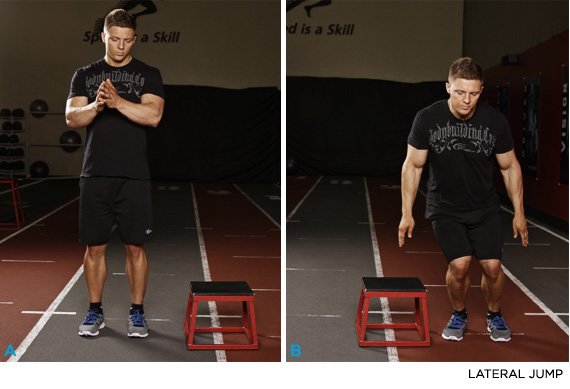
{{caption}}
4. Lateral Jump
2-4 sets, 6 reps
Jumping sideways is a great way to recruit your lateral hip stabilizers. Jump as far laterally as possible. You should be able to measure it in feet, not in inches!
5. Medicine Ball Rotational Throws
2 sets, 6 reps per side
Standing on one leg, rotate torso powerfully and throw ball as forceful as possible against the wall.

